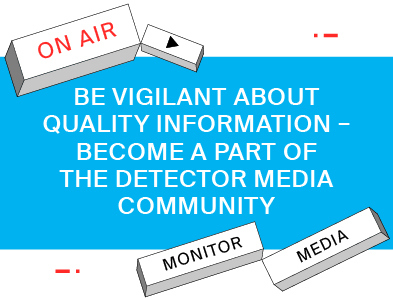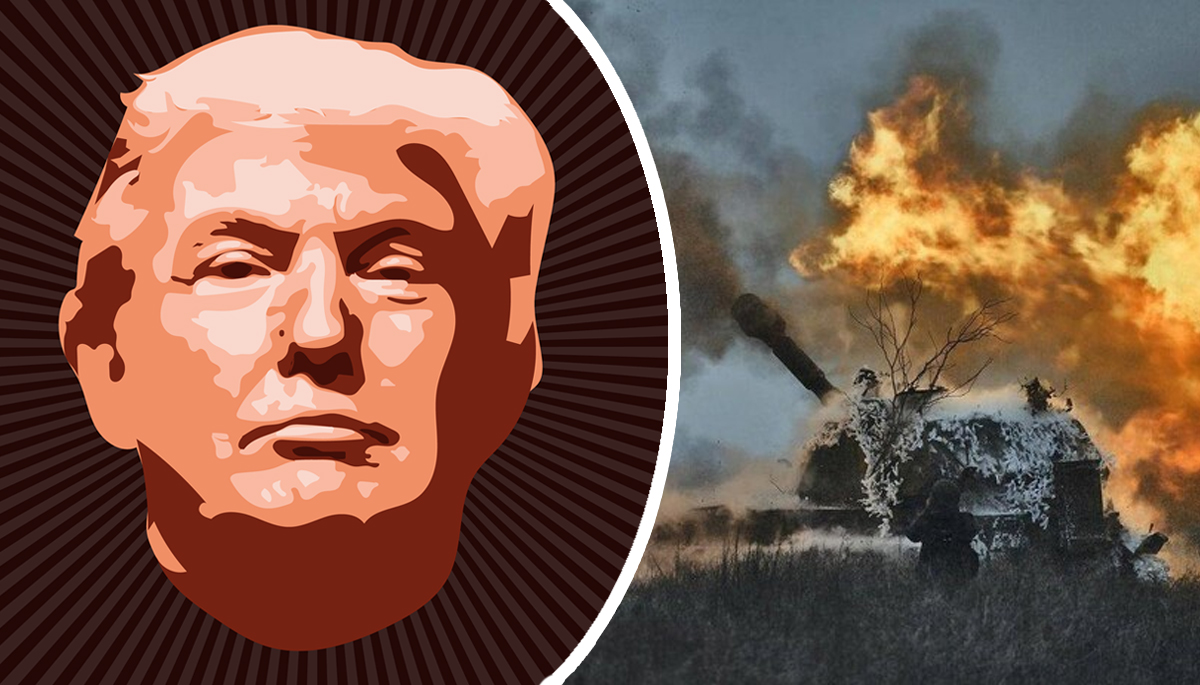

Українською читайте тут.
Risks and scenarios of US refusal to act as mediator in negotiations between Ukraine and Russia.
The Russian-Ukrainian war has become one of the key challenges to global security, and the US role as a leading mediator and Ukraine's ally has been decisive in deterring Russian aggression. However, in 2025, the Donald Trump administration may change course, stepping back from active participation in negotiations to establish a just peace. This move will not only affect Ukraine's position but also call into question transatlantic unity, open doors for strengthening Russian and Chinese influence, and may alter the balance of power in Europe and globally.
We explain how events may unfold in case of partial or complete US withdrawal from negotiations.
«End the war in 24 hours» vs. exiting negotiations
If we trace the chronology of Trump's words and actions regarding withdrawal from negotiations to end the Russian-Ukrainian war, we see disappointment in the inability to find a solution to the war either in 24 hours or in the first hundred days in the White House. At the same time, the US president blames Ukraine for unwillingness to make peace more than Russia, while the White House avoids direct pressure on Russia and imposing new sanctions, considering possibilities for potential trade deals with Moscow.
After President Zelensky's visit to Washington on February 28, 2025, the peace-making «prelude» to negotiations and discussion of a mineral resources agreement, relations between the US and Ukraine changed. There was a temporary suspension of military aid and intelligence sharing (during March 3-11), and Washington began pressuring Kyiv and President Zelensky regarding signing the so-called mineral deal. These steps can be interpreted as a gesture that clearly showed how US withdrawal from the negotiation process and non-participation in European collective security measures might look in practice.
On March 10, US Secretary of State Marco Rubio said that «the aid suspension arose because we felt that the Ukrainians were not amenable to negotiations. But if that changes, US policy will likely change too, and aid will resume».
During a meeting of US, French, British, and German delegations in Paris on April 17, America presented European countries with conditions for an agreement to end the war, which, among other things, stated that US sanctions imposed against Russia since 2014 could be gradually eased after achieving sustainable peace and restored in case of peace agreement violations.
The United States will exit negotiations to end the Russian-Ukrainian war if the parties «complicate the process». «If for some reason one of the two sides complicates this, we'll just say you're fools, you're terrible people, and we'll just take a pass. But hopefully we won't have to do that», Donald Trump said on April 18.
On April 18, Marco Rubio said: «We need to figure out here and now, within a few days, whether this [peace agreement] is possible in the short term, because if it's not, I think we'll just move on». He added that «the Ukrainian war is a terrible thing, but it's not our war... There are many other really important things that deserve the same, if not more, attention».
On April 29, Rubio again warned: if Russia and Ukraine do not propose concrete plans to end the Russian-Ukrainian war, the United States will abandon its mediator role.
The US will change the «methodology and style» of its peace settlement efforts in Russia's war against Ukraine, State Department spokesperson Tammy Bruce also said at a May 1 briefing: «We certainly remain committed to this cause, and will help and do everything in our power. But we're not going to fly around the world at the drop of a hat to conduct mediation meetings».
On May 13, US President's Special Envoy Steve Witkoff explained that «without direct negotiations [between Kyiv and Moscow], if they don't happen quickly, then, in his opinion, the United States should step back from this conflict, whatever that means, and just not participate».
After a two-hour conversation with Putin on May 19, Trump assured that Russia and Ukraine would «immediately» begin ceasefire negotiations. He proposed that the Vatican conduct negotiations between the parties. Trump also suggested that Washington might resume trade relations with Moscow. Meanwhile, Russian Foreign Minister Sergey Lavrov rejected the idea of holding negotiations at the Vatican on the grounds that, in his opinion, a meeting of «two Orthodox states on Catholic grounds would be uncomfortable for the Vatican itself». Instead, Moscow proposed holding the second round of talks in Istanbul on June 2, 2025. Sergey Lavrov added that Russia had developed a «memorandum» outlining its position on «reliably overcoming the root causes» of the war in Ukraine, which he called a «crisis».
Measuring Trump's patience
International media comment and assess the risks of US «loss of interest» in settling the Russian-Ukrainian war differently. For example, Dave Lawler and Barak Ravid in an Axios column titled «Trump shows unusual patience as Putin stalls on Ukraine» write that the US president has so far given Putin much of what the Russian president hoped for: «No ceasefire, no sanctions, divisions within NATO and considerable freedom of action from an American leader not known for his patience.» Discussing the proposal to hold the next round of negotiations between Russia and Ukraine at the Vatican, they emphasize that «there is a stark difference between Trump and European leaders on the question of pressuring Putin or having patience with him.» As a conclusion, the Axios authors suggest watching Republican Senator Lindsey Graham's initiative to impose 500% tariffs on countries that buy oil from Russia (including China). However, they add that «for now, Trump seems content to let Putin make the next move.» That is, Russia holds the initiative not only in the negotiation process but can also accumulate forces for a summer offensive campaign.
Matthew Chance, CNN's chief international correspondent, analyses the possible change in the US role in peacemaking efforts in Ukraine. In particular, he writes that one option could be strengthening US military support for Ukraine. According to Chance, «despite Trump's efforts to appease the Kremlin, or perhaps because of them, Russian intransigence has become the main obstacle to peace.» The next step could be new, sufficiently harsh US sanctions on Russian oil and gas and those who buy them, as a potential means of increasing pressure on Moscow. However, according to the CNN correspondent, the main obstacle is that establishing peace in Ukraine is only one item on the agenda of what Trump and the Kremlin may consider a «reset» of US-Russian relations. Other items include energy deals, space research, and mineral extraction contracts that Trump may not want to jeopardize.
The Politico authors' collective, unlike the Axios authors, writes that «Trump is losing patience with Putin but unsure of his next step.» Citing four sources among American officials, the article's authors write that Trump has not yet decided whether to impose additional sanctions against Moscow in response to Putin's intensification of attacks on Ukraine. Also, describing the American president's recent fluctuations regarding Russia, the Politico authors point out that «however disappointed Trump may be in Putin, he has made it clear to Europeans that he doesn't like sanctions and hopes he can force the Russian leader to cooperate without using them.» Citing sources among European officials who express concerns that Moscow is trying to separate the war in Ukraine from broader US-Russian relations, the authors describe Trump's motivation to seek economic gain in everything as one of the prerequisites for his «mediation fatigue». Based on the latest phone call between Putin and Trump, the Politico authors conclude that American and Russian high-ranking officials no longer think about the negotiation process as such, but actively discuss profitable opportunities that may emerge if both states normalize bilateral relations after peace negotiations.
Rajan Menon, senior research fellow at Columbia University's Institute for the Study of War and Peace, writes in a Guardian column that both of Trump's strategies toward Putin—intimidation or flattery—have failed. Menon expresses pessimism about the likelihood of cessation of hostilities and lists arguments «even if Trump goes beyond social media posts and words and actually imposes additional economic sanctions against Russia this time.» According to him, firstly, neither Russian army losses nor the state of the economy are drivers for Putin's motivation to stop the war right now, because having made such sacrifices, stopping «halfway» (without capturing all of Ukraine — DM) would mean loss of authority among Russian elites for the Kremlin leader. Secondly, the Kremlin head managed to convince Trump, and this he conveyed in his conversations with European leaders, that Russia is winning on the battlefield. Therefore, peace negotiations, whether with US participation or in a situation where Trump becomes disappointed in them, will not yield results until Russia loses real capabilities to continue the war.
Foreign policy analyst A.J. Kimbell, commenting for Fox News on Trump's Truth Social post that Putin is «absolutely crazy», simultaneously said that a key element of Putin's strategy is to continue escalation until someone resists him. And if Putin is convinced that the West is weak, then, according to Kimbell, he is wrong about President Trump: «We can expect President Trump to impose secondary sanctions against Russia in the coming weeks. But an even greater impact may come from the result of the American president's recent trip to the Middle East and the continued fall in oil prices.» According to the expert, the Russian economy is too dependent on energy exports, so if oil prices fall even more, Russia will cease to be able to finance the war against Ukraine.
Four scenarios of US exit from the negotiation process
At the end of February and in March 2025, the US demonstrated what their radical departure from settling the Russian-Ukrainian war might look like. In April 2025, the White House repeatedly prepared to end negotiations, citing their lack of success and the current administration's focus on other priorities. And in May, the idea of direct negotiations between Russia and Ukraine without US mediation was directly voiced in US rhetoric. On one hand, there is Trump's desire for quick results at any cost, even if it means weakening support for a key ally in favour of separate benefits for the US. On the other hand, the lack of rapid progress on resolving the Russian-Ukrainian war reduces US interest in mediation or helping Ukraine in general.
Ukrainian Foreign Minister Andriy Sybiha, in an interview with Liberation, responding to a question about preparing for a possible US exit from peace negotiations, said: «Ukraine must become increasingly self-sufficient in defence matters. We have the opportunity to accelerate this process. In a broader sense, this also concerns Europe's self-sufficiency. It is taking on more and more responsibility for its own security.»
Given the uncertain US position, the «Detector Media» Research Centre proposes four possible scenarios according to which events may unfold.
Scenario 1: Abandoning the mediator role and normalizing relations with Russia
US actions: The US does not announce new support packages and stops other military and intelligence assistance to Ukraine, while reducing the presence of its troops on NATO's eastern flank. Likely lifting of some sanctions against Russia, particularly in the energy sector, and establishing economic cooperation by restoring trade ties. The US may also unilaterally recognize Ukrainian temporarily occupied territories (all or part, for example, Crimea) as Russian.
Reaction of other actors: European states, especially those geographically closer to Russia and Belarus, will feel the ‘depressurization’ of collective security. This, in turn, may lead to polarization and weakening among allies within NATO. Europe may try to independently support Ukraine, but economic costs will cause tension in the EU, and trends in the domestic politics of individual EU states will encourage politicians to promote ideas of abandoning support for Ukraine.
Risks and probability: the least optimistic and most threatening scenario for Ukraine. The risk of such developments in 2025 remains moderate and will depend not only on moods in the White House but also on Russia's successes on the battlefield and the effectiveness of joint Ukrainian-European efforts to keep US attention on our region.
Consequences: Complete US withdrawal will not necessarily lead to immediate defeat, but will strike at Ukraine's long-term battlefield effectiveness, which will depend on Europe's ability to fill the cessation of US support and rely on its own defence industry capabilities. Europeans cannot fully replace US capabilities, especially in air defence and intelligence assistance for precision targeting. Broader geopolitical consequences of US troop withdrawal from European countries may encourage Russia and its allies while straining transatlantic unity. This scenario may also be accelerated by the new White House administration's declaration of focus on the Pacific region and rivalry with China.
Scenario 2: Transferring initiative to Europe with passive US role
US actions: The US may step back from direct participation in negotiations but support European mediation efforts. The US will continue to provide Ukraine with basic military aid (for example, outdated weapons) or humanitarian support but will avoid supplying advanced systems such as F-16 fighters or long-range missiles. Intelligence sharing continues but in limited scope, focused on protecting US interests (for example, monitoring Russian troops near NATO borders).
Reaction of other actors: Europe may take the lead, but differences in interests between EU countries may complicate negotiations. This may push the EU toward creating its own defence strategy but also weakens transatlantic unity. This may also stimulate the EU to use funds from frozen Russian assets to, for example, buy weapons from the US for Ukraine.
Risks and probability: the transition to such a scenario in 2025 is, in our opinion, quite likely. This is supported by the chaotic nature and constant postponement of «deadlines» by the US regarding Russia and systematic criticism of Ukrainian authorities. The EU and Germany could play a major role in such developments. The latter's actions will depend on the stability of the newly formed coalition of Christian Democratic Union and Social Democratic parties led by Friedrich Merz, as well as the ability to quickly obtain results from investments in the European Defence Fund.
Consequences: The US maintains the image of an ally but loses leadership in European security. Ukraine receives support from Europe, but its volume depends on the EU's economic capabilities. Negotiations are prolonged due to lack of a strong mediator, which may lead to a frozen conflict. Russia gains manoeuvring space, but not complete victory due to European resistance.
Scenario 3: Limited support for Ukraine
US actions: The US may continue to provide military aid but with conditions related to economic agreements, such as the mineral resources agreement concluded in April 2025. The States may continue supplying defensive systems that will include air defence systems, ammunition, and artillery to help Ukraine gradually stabilize the front while avoiding escalation and crossing Moscow's conditional ‘red lines.’
Reaction of other actors: European states may support this approach, but some, particularly Poland and the Baltic States, may demand more active US participation in NATO and collective security on the European continent.
Risks and probability: in a certain sense, such a scenario can be called a continuation of ‘Biden's policy’ and the previous administration through deterring escalation and adhering to the formula ‘Ukraine must not lose, Russia must not win.’ However, in 2025, the probability of such a scenario seems low because in practice it leads neither to a peace agreement nor to a ‘frozen conflict.’ An important factor remains Russia's preparation of a new military grouping for the summer campaign and restoration of the ‘Leningrad Defence District’, which may be used not only against Ukraine but also against NATO states in the Baltics.
Consequences: Ukraine gets the opportunity to stabilize the front, but dependence on US conditions may limit its manoeuvres in negotiations. NATO may strengthen the eastern flank, but internal resistance in the US (for example, regarding spending) may limit the scale of support.
Scenario 4: Renewal of support packages for Ukraine and introduction of secondary sanctions against Russia
US actions: Despite threats to exit negotiations, the States decide not to completely retreat from supporting Ukraine and reformat it to maintain influence in Europe. Washington refuses to follow the Kremlin's approach of separating the ‘Ukrainian issue’ from resetting bilateral US-Russia relations, focusing on military and strategic assistance to Ukraine, as well as collective security on the European continent. The US increases military presence in Poland, the Baltic countries, and Romania, deploying additional troops, missile defence systems, and conducting joint exercises.
Reaction of other actors: European states strengthen cooperation among themselves and with the States to compensate for previous tensions after statements about exiting negotiations. Through joint efforts, they strengthen NATO's eastern flank and support Ukraine.
Risks and probability: Russia may once again resort to ‘nuclear blackmail’ tactics. The overall US strategy under the new administration focuses on weakening China, particularly through slowing down global trade with low oil prices. In 2025, the probability of such a scenario remains moderately low.
Consequences: this is the most optimistic for Ukraine and devastating for Russia scenario. Ukraine gains strategic advantage at the front, which may lead to a prolonged war with fewer losses for Kyiv. Russia will be forced to seek compromises due to increased NATO pressure.
Collage illustration by Mykola Shymanskyi


